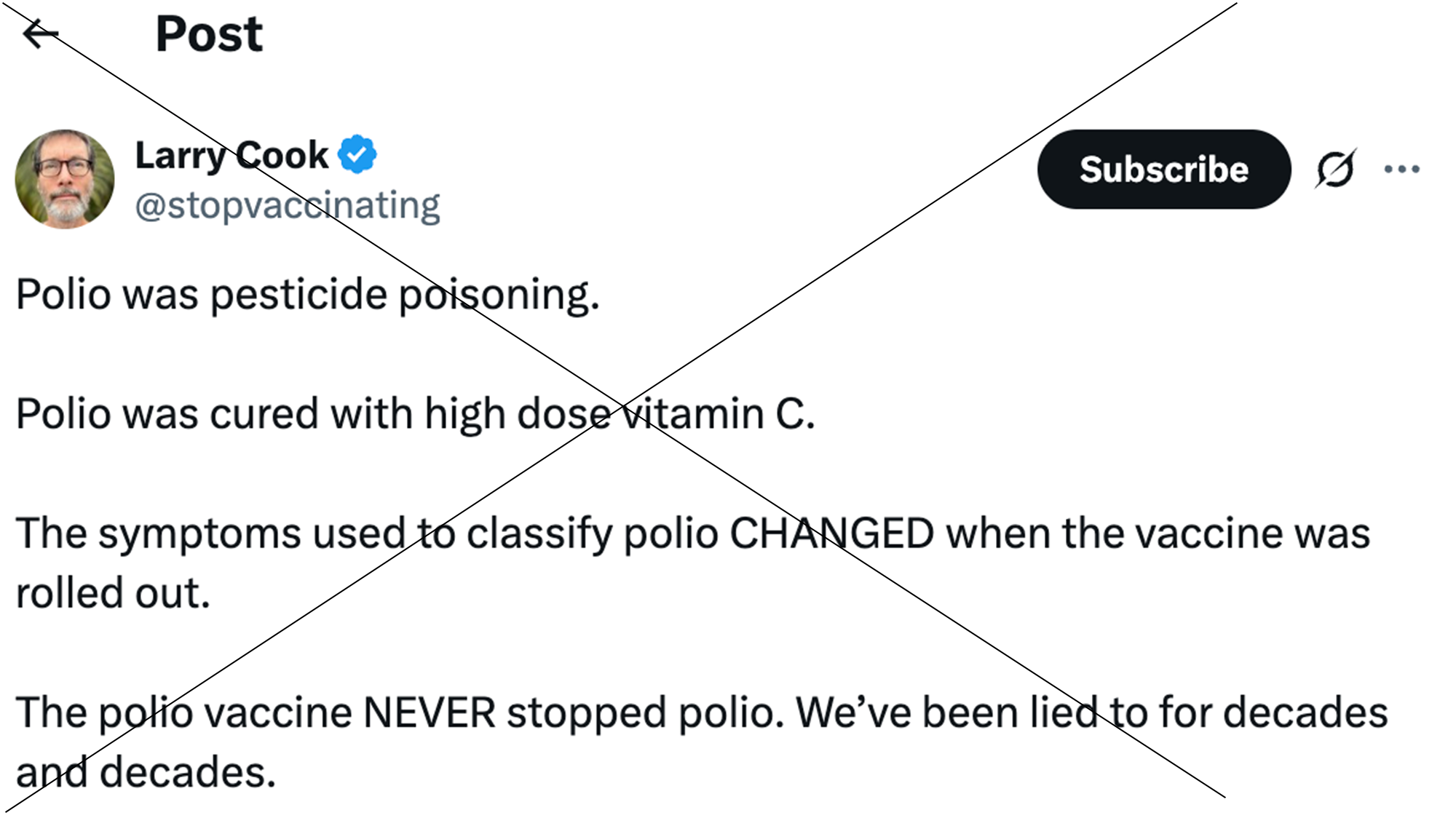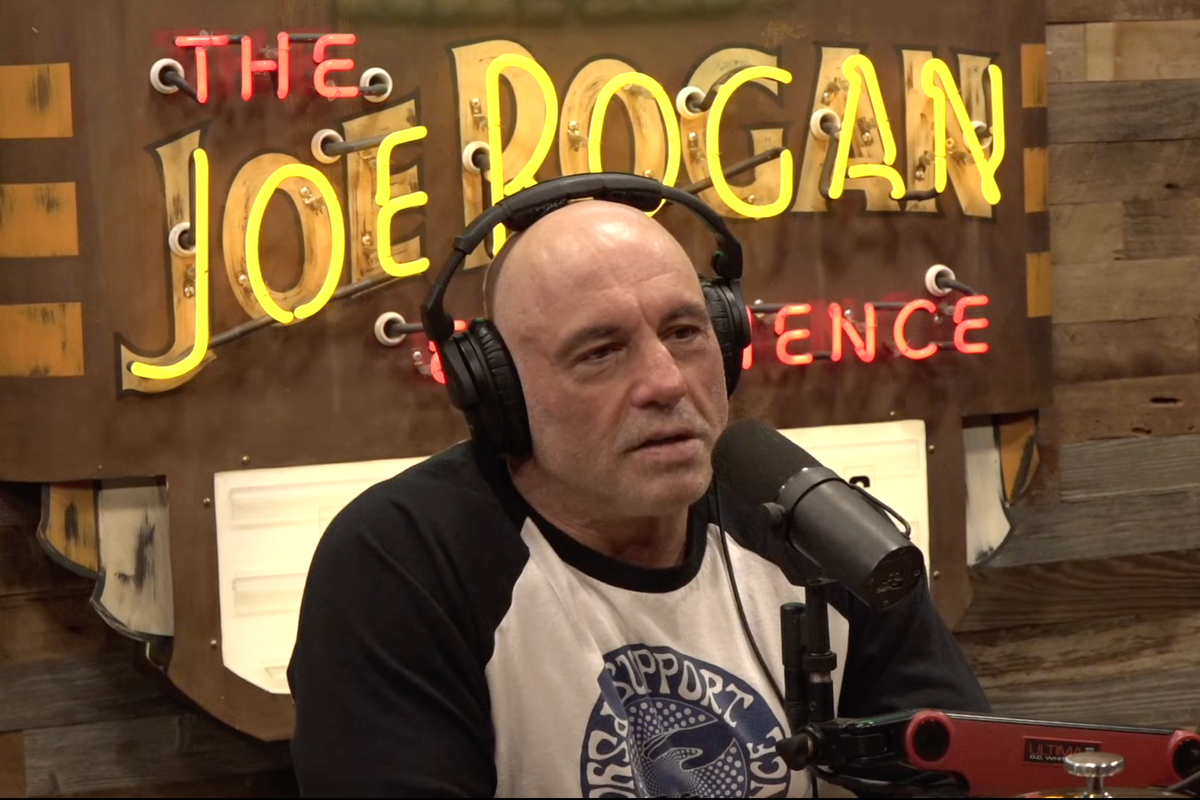Even in the house of horrors that is vaccine-preventable illnesses, polio stands out as particularly terrifying. Before the rollout of the vaccine in the 1950s, the disease paralyzed or killed more than 500,000 people worldwide every year. The disease was especially catastrophic for children, some of whom were confined for years to wheelchairs or a mechanical breathing chamber known ominously as the iron lung. Older people remember being forbidden to play outside during summer outbreaks for fear that they would catch the disease.
The darker chapters of public health history do not seem to faze anti-vaccine activists, who have long claimed that measles, a catastrophic disease, is no big deal. Now, it’s polio’s turn to be downplayed.
Over the last few months, a handful of influential anti-vaccine activists have dabbled in polio denialism. In September, for example, Larry Cook, founder of the anti-vaccine group Stop Mandatory Vaccination, falsely claimed to his 137,000 followers on X that polio “was cured with high dose vitamin C” and that “the polio vaccine NEVER stopped polio. We’ve been lied to for decades and decades.”

Then, in October, Suzanne Humphries, a holistic medicine practitioner and anti-vaccine activist, appeared on Joe Rogan’s wildly popular podcast. “The early injection caused more paralytic polio than it prevented,” she told Rogan. “And that’s the part that people don’t understand when they say, ‘What about polio? Because there’s no more iron lungs, there’s no more crippling, there’s no more of these poor little kids walking around with their casts.’ Well, that’s not true because the iron lung is now called a ventilator.” She went on to argue that “we still have polio that we had in 1953” because many of the cases back then weren’t technically polio but rather paralysis triggered by vaccines, tonsillectomies, and exposure to toxic substances like arsenic.
To call those claims dangerously misleading is an understatement, so let’s briefly dispense with them. The early injections were, in fact, remarkably effective, with cases declining by 90 percent within the first three years of the vaccine rollout; ventilators are not the same as iron lungs; polio was a distinct virus that scientists successfully isolated in stool samples.
Humphries isn’t the only one spreading misinformation about polio on Joe Rogan’s show. A month after her appearance, Gavin de Becker, a security specialist, mega-donor to RFK Jr.’s failed presidential campaign, and anti-vaccine activist, made similarly specious claims on the show. “Here’s the reality of polio, right from the CDC website: 99 percent of people who get polio never have any symptoms,” he said. What’s more, he said, polio killed just 500 people last year and paralyzed an additional 500, and many of the cases were actually caused by the live virus contained in vaccines. He went on to claim that historic cases of polio paralysis were actually caused by exposure to the pesticide DDT.
Again, a real grab bag here. First off, let’s address the outright falsehoods: polio paralysis, as Politifact and Factcheck.org confirm, was never caused by DDT. Now, for the more slippery assertions: Yes, it’s true that 99 percent of polio cases are asymptomatic and that only 1,000 people last year died of or were paralyzed by the disease. True as well that today, most polio cases are caused by the live virus in the vaccine.
What de Becker conveniently ignores is that all these current realities are actually strong arguments in favor of vaccination. The fact that the yearly death toll and paralysis numbers are so low is because of widespread vaccination efforts, which have resulted in polio infection decreasing by 99 percent worldwide since 1988 and led to it being considered as eradicated in all but two countries (Afghanistan and Pakistan). Even a paralysis rate of one percent is catastrophic at scale—let’s remember that the disease killed or paralyzed half a million people every year before vaccines. As for vaccine-derived polio, ironically, it is much more likely to spread and mutate in undervaccinated populations.
Anti-vaccine advocacy groups were quick to amplify Humphries’ and de Becker’s claims. Children’s Health Defense, the organization Health and Human Services Secretary Robert F. Kennedy, Jr. founded, jumped at the chance, as did the MAHA Institute, a group that focuses on fundraising and policy around Kennedy’s Make America Healthy Again initiative.
Then, earlier this week, a video of a man holding a baby while talking about polio made the rounds. In addition to repeating Humphries’ and de Becker’s dubious talking points, he claims that modern sanitation could stop the spread of polio. “You have to literally put the feces of a polio-infected human being into your mouth to contract polio,” he announces. “And that sounds more like a sanitation issue rather than a vaccination issue.” (Presumably the baby this guy is holding does not attend daycare, where the fecal-oral route of disease transmission is, uh, robust.) The video has been viewed 376,000 times on X and counting.
Only a generation or two back, someone who claimed that polio wasn’t so bad would have been swiftly shouted down—because most people knew someone for whom polio had indeed been very bad. It is precisely because of the success of vaccines that polio misinformation can now find a foothold. Last month, infectious disease doctor Neil Stone tweeted a photo of an iron lung. “This is an iron lung for polio victims,” he wrote. “Remember these? Me neither. It’s now in a museum…where it should stay. Why? Because vaccines work.”














